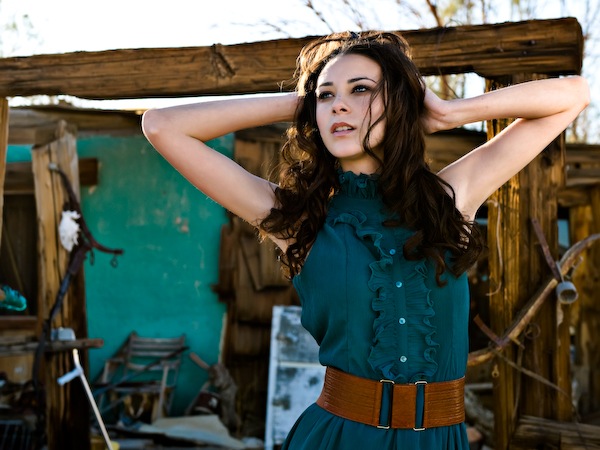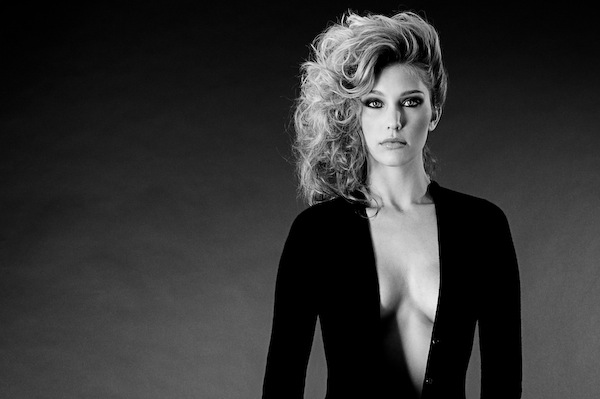Source (Google.com.pk)
Photographer Fashion Biography
Each day, we put on clothes that do more than just cover up bodies. We choose clothes that represent our personalities, our moods, the times we live in, our ambitions and our desires. Who are the people behind the designs we wear every day? These fashion designers who have made fashion a huge industry, and whose work is as controversial, and as influential, as traditional art. These are some of the designers who have dressed the world's most famous people—and are hugely famous in their own right.
Valerie Steele (Ph.D., Yale University) is Director and Chief Curator of The Museum at the Fashion Institute of Technology (MFIT). She has curated more than 20 exhibitions in the past ten years, including Gothic: Dark Glamour; Love & War: The Weaponized Woman; The Corset: Fashioning the Body; London Fashion; and Femme Fatale: Fashion in Fin-de-Siècle Paris.
Editor-in-chief of Fashion Theory: The Journal of Dress, Body & Culture (Berg Publishers), which she founded in 1997, Dr. Steele is also the author of numerous books, including Gothic: Dark Glamour; The Corset: A Cultural History; Paris Fashion; Fifty Years of Fashion: New Look to Now; Fetish: Fashion, Sex and Power; and Women of Fashion: 20th-Century Designers. She was editor-in-chief of the three-volume Encyclopedia of Clothing and Fashion. Her latest book was Isabel Toledo: Fashion from the Inside Out, which she co-authored with Patricia Mears, in conjunction with an exhibition of the same name. She is currently working on a book and exhibition, Japan Fashion Now.
Dr. Steele lectures frequently and has appeared on many television programs, including The Oprah Winfrey Show and Undressed: The Story of Fashion. After she appeared on the PBS special, The Way We Wear, she was described in The Washington Post as one of “fashion’s brainiest women.” Often quoted in media, she was herself the subject of profiles in Forbes: “Fashion Professor” and in The New York Times: “High-Heeled Historian,” as well as being listed in the New York Daily News “Fashion’s 50 Most Powerful.”
Gucci was founded by Guccio Gucci in the early 1920s. As an immigrant in Paris and then London, Guccio made a living working in luxurious hotels and was impressed with the affluent luggage he saw the guests carrying. Inspired particularly by the elevated lifestyle he witnessed in the Savoy Hotel in London, on his return to Italy he decided to merge this refined style of living with the exclusive skills of his native craftsmen. Specifically he utilised the skills of local Tuscan artisans. He began by selling leather bags to horsemen in the 1920s and graduated into luxury luggage with the emergence of horseless carriages and non-equine transport.
Together with his sons, Gucci expanded his company to include stores in Milan and Rome as well as additional shops in Florence, selling his finely crafted leather accessories as well as silks and knitwear featuring his signature logo. Within a few years the label was enjoying growing success, the cosmopolitan international elite holidaying in Florence converged on Gucci’s bottega on a quest for his equestrian inspired Gucci shoes, bags, trunks, gloves and belts.
Created in the mid 1930s the Gucci Diamante pattern was first woven onto hemp and used on luggage. What started as an innovative solution to pre-war leather shortages became the Florentine atelier’s first iconic print and the design’s criss-cross pattern was a precursor to the famous GG logo. Although utilised throughout the fifties, the Diamante canvas fell largely into disuse until it was re-discovered by Giannini in the Gucci archives and used on a limited edition collection of classic Gucci handbags, shoes and leather goods.
Many of Gucci’s local Italian clients were horse-riding aristocrats and their call for riding gear led Gucci to develop its unique Horsebit signature logo in the early 1950s. It was first used on ample saddle stitched leather Gucci handbags, since then it has been enlarged, minimalised, luxuriously embossed and branded into leather and velvet, turned into repeat patterns printed onto silk and transformed into components of Gucci jewellery. The Horsebit later played a vital role in the marketing of one of fashion’s most iconic shoes, the Gucci loafer.
Faced with scant foreign supplies during the years of Italy’s fascist dictatorship, Gucci continued to experiment with unusual materials such as hemp, linen and jute. One of his best known creations was the adding of a patina to a cane to create the handle of the new Bamboo Bag, whose curvy shape was inspired by the contours of a saddle. Over time the bamboo handle evolved from its origins as a solution to shortages and became a signature motif of many incarnations of Gucci bags. Bamboo inspired patterns have also featured on a variety of products from headscarves to watchstraps; it has even been skilfully carved into a pair of golden stiletto heels.
During the 1950s Gucci again took equestrian inspiration for the creation of its trademark green and red Web stripe, derived from the traditional colours of saddle girth strap. Throughout the brand’s history the Web stripe has appeared on an array of products. In modern collections the Web’s stripes have been morphed into various colours, materials and sizes.
With Gucci’s death in 1953 his sons Aldo, Vasco, Ugo and Rodolfo took over the family business. The brothers took the successful luggage business to new heights, opening stores round the world and making the Gucci name synonymous with celebrity and chic. Gucci products quickly became internationally renowned for their enduring style and were valued by movie icons and elite figures in the era of the Jet Set.
Jackie Kennedy Onassis sported the Gucci shoulder bag, which later became known as the Jackie O. Created in the late 1950s, the Jackie O bag was given its name after being photographed numerous times on the arm if its namesake while she was working as a consulting editor at Doubleday. Elizabeth Taylor, Samuel Beckett and Peter Sellers carried the slouchy unisex Hobo Bag.
After a personal request from the Princess of Monaco Grace Kelly, the now famous Gucci scarf print Flora was created. Flora was immensely popular amongst European women, who held it in such regard that they passed this loyalty onto their daughters. One was Princess Caroline of Monaco who adopted her mothers scarf print into her daily wardrobe.
By the early 1960s Gucci had adopted the celebrated double interlocking G logo, creating yet another trademark insignia for the company. Single or double Gs were squared off and used as fastenings for bags; these were developed and produced at Gucci’s own forge at its historic workshop on Via delle Caldaie in Florence. The double Gs were soon transferred onto the internationally recognised cotton canvas luggage. The GG monogram solidified the company’s fame and the Gucci name was carried around the globe in the much-photographed company of movie stars, aristocrats and socialites. The GG logo became a status symbol and hallmark of high glamour, luxury and desirability. Over time the squared off G logo has been endlessly re-worked, merged into a circle, inverted, abstracted and even controversially shaved into a model’s pubic hair.
Throughout the 1960s Gucci continued its global expansion opening Gucci shops in London, the USA and the lucrative emerging market of the Far East. Following the enlargement of their luggage business, the company developed the first RTW Gucci collection, heavily featuring the double G logo.
The brand was now becoming known not just for its exceptional Italian quality and craftsmanship, but also for its innovative and audacious clothing line. The Gucci insignia were constantly re-invented through new shapes, colours and techniques, the GG logo was burnt through suede and leather, again being inspired by equestrian branding. The company used ever more opulent materials, the finest leathers and suede and exotic animal skins such as baby crocodile.
Following enormous success in the 1970s, Gucci, like many luxury labels such as Burberry, suffered a proletarian drift due to over branding and licensing of products. By the time Gucci’s creative director Dawn Mello hired a then unknown Tom Ford in 1990 ‘no one would dream of wearing Gucci’. Ford imbued the luxury brand with a sense of adventure and sensuality that reverberated throughout the fashion world and inspired a new breed of celebrity to buy Gucci.
Raised in Texas and New Mexico, Ford moved to New York to study architecture at Parsons School of Design. During his time in New York, he became a regular at the legendary nightclub Studio 54. The club’s famous disco-era mystique would become a major influence on his designs. Before completing his course at Parsons, Ford spent a year and a half in Paris where he worked as an intern at the Chloé press office, this work triggered his love of fashion. He spent his final year at Parsons studying fashion but nevertheless graduated with a degree in architecture.
Each day, we put on clothes that do more than just cover up bodies. We choose clothes that represent our personalities, our moods, the times we live in, our ambitions and our desires. Who are the people behind the designs we wear every day? These fashion designers who have made fashion a huge industry, and whose work is as controversial, and as influential, as traditional art. These are some of the designers who have dressed the world's most famous people—and are hugely famous in their own right.
Valerie Steele (Ph.D., Yale University) is Director and Chief Curator of The Museum at the Fashion Institute of Technology (MFIT). She has curated more than 20 exhibitions in the past ten years, including Gothic: Dark Glamour; Love & War: The Weaponized Woman; The Corset: Fashioning the Body; London Fashion; and Femme Fatale: Fashion in Fin-de-Siècle Paris.
Editor-in-chief of Fashion Theory: The Journal of Dress, Body & Culture (Berg Publishers), which she founded in 1997, Dr. Steele is also the author of numerous books, including Gothic: Dark Glamour; The Corset: A Cultural History; Paris Fashion; Fifty Years of Fashion: New Look to Now; Fetish: Fashion, Sex and Power; and Women of Fashion: 20th-Century Designers. She was editor-in-chief of the three-volume Encyclopedia of Clothing and Fashion. Her latest book was Isabel Toledo: Fashion from the Inside Out, which she co-authored with Patricia Mears, in conjunction with an exhibition of the same name. She is currently working on a book and exhibition, Japan Fashion Now.
Dr. Steele lectures frequently and has appeared on many television programs, including The Oprah Winfrey Show and Undressed: The Story of Fashion. After she appeared on the PBS special, The Way We Wear, she was described in The Washington Post as one of “fashion’s brainiest women.” Often quoted in media, she was herself the subject of profiles in Forbes: “Fashion Professor” and in The New York Times: “High-Heeled Historian,” as well as being listed in the New York Daily News “Fashion’s 50 Most Powerful.”
Gucci was founded by Guccio Gucci in the early 1920s. As an immigrant in Paris and then London, Guccio made a living working in luxurious hotels and was impressed with the affluent luggage he saw the guests carrying. Inspired particularly by the elevated lifestyle he witnessed in the Savoy Hotel in London, on his return to Italy he decided to merge this refined style of living with the exclusive skills of his native craftsmen. Specifically he utilised the skills of local Tuscan artisans. He began by selling leather bags to horsemen in the 1920s and graduated into luxury luggage with the emergence of horseless carriages and non-equine transport.
Together with his sons, Gucci expanded his company to include stores in Milan and Rome as well as additional shops in Florence, selling his finely crafted leather accessories as well as silks and knitwear featuring his signature logo. Within a few years the label was enjoying growing success, the cosmopolitan international elite holidaying in Florence converged on Gucci’s bottega on a quest for his equestrian inspired Gucci shoes, bags, trunks, gloves and belts.
Created in the mid 1930s the Gucci Diamante pattern was first woven onto hemp and used on luggage. What started as an innovative solution to pre-war leather shortages became the Florentine atelier’s first iconic print and the design’s criss-cross pattern was a precursor to the famous GG logo. Although utilised throughout the fifties, the Diamante canvas fell largely into disuse until it was re-discovered by Giannini in the Gucci archives and used on a limited edition collection of classic Gucci handbags, shoes and leather goods.
Many of Gucci’s local Italian clients were horse-riding aristocrats and their call for riding gear led Gucci to develop its unique Horsebit signature logo in the early 1950s. It was first used on ample saddle stitched leather Gucci handbags, since then it has been enlarged, minimalised, luxuriously embossed and branded into leather and velvet, turned into repeat patterns printed onto silk and transformed into components of Gucci jewellery. The Horsebit later played a vital role in the marketing of one of fashion’s most iconic shoes, the Gucci loafer.
Faced with scant foreign supplies during the years of Italy’s fascist dictatorship, Gucci continued to experiment with unusual materials such as hemp, linen and jute. One of his best known creations was the adding of a patina to a cane to create the handle of the new Bamboo Bag, whose curvy shape was inspired by the contours of a saddle. Over time the bamboo handle evolved from its origins as a solution to shortages and became a signature motif of many incarnations of Gucci bags. Bamboo inspired patterns have also featured on a variety of products from headscarves to watchstraps; it has even been skilfully carved into a pair of golden stiletto heels.
During the 1950s Gucci again took equestrian inspiration for the creation of its trademark green and red Web stripe, derived from the traditional colours of saddle girth strap. Throughout the brand’s history the Web stripe has appeared on an array of products. In modern collections the Web’s stripes have been morphed into various colours, materials and sizes.
With Gucci’s death in 1953 his sons Aldo, Vasco, Ugo and Rodolfo took over the family business. The brothers took the successful luggage business to new heights, opening stores round the world and making the Gucci name synonymous with celebrity and chic. Gucci products quickly became internationally renowned for their enduring style and were valued by movie icons and elite figures in the era of the Jet Set.
Jackie Kennedy Onassis sported the Gucci shoulder bag, which later became known as the Jackie O. Created in the late 1950s, the Jackie O bag was given its name after being photographed numerous times on the arm if its namesake while she was working as a consulting editor at Doubleday. Elizabeth Taylor, Samuel Beckett and Peter Sellers carried the slouchy unisex Hobo Bag.
After a personal request from the Princess of Monaco Grace Kelly, the now famous Gucci scarf print Flora was created. Flora was immensely popular amongst European women, who held it in such regard that they passed this loyalty onto their daughters. One was Princess Caroline of Monaco who adopted her mothers scarf print into her daily wardrobe.
By the early 1960s Gucci had adopted the celebrated double interlocking G logo, creating yet another trademark insignia for the company. Single or double Gs were squared off and used as fastenings for bags; these were developed and produced at Gucci’s own forge at its historic workshop on Via delle Caldaie in Florence. The double Gs were soon transferred onto the internationally recognised cotton canvas luggage. The GG monogram solidified the company’s fame and the Gucci name was carried around the globe in the much-photographed company of movie stars, aristocrats and socialites. The GG logo became a status symbol and hallmark of high glamour, luxury and desirability. Over time the squared off G logo has been endlessly re-worked, merged into a circle, inverted, abstracted and even controversially shaved into a model’s pubic hair.
Throughout the 1960s Gucci continued its global expansion opening Gucci shops in London, the USA and the lucrative emerging market of the Far East. Following the enlargement of their luggage business, the company developed the first RTW Gucci collection, heavily featuring the double G logo.
The brand was now becoming known not just for its exceptional Italian quality and craftsmanship, but also for its innovative and audacious clothing line. The Gucci insignia were constantly re-invented through new shapes, colours and techniques, the GG logo was burnt through suede and leather, again being inspired by equestrian branding. The company used ever more opulent materials, the finest leathers and suede and exotic animal skins such as baby crocodile.
Following enormous success in the 1970s, Gucci, like many luxury labels such as Burberry, suffered a proletarian drift due to over branding and licensing of products. By the time Gucci’s creative director Dawn Mello hired a then unknown Tom Ford in 1990 ‘no one would dream of wearing Gucci’. Ford imbued the luxury brand with a sense of adventure and sensuality that reverberated throughout the fashion world and inspired a new breed of celebrity to buy Gucci.
Raised in Texas and New Mexico, Ford moved to New York to study architecture at Parsons School of Design. During his time in New York, he became a regular at the legendary nightclub Studio 54. The club’s famous disco-era mystique would become a major influence on his designs. Before completing his course at Parsons, Ford spent a year and a half in Paris where he worked as an intern at the Chloé press office, this work triggered his love of fashion. He spent his final year at Parsons studying fashion but nevertheless graduated with a degree in architecture.
Photographer Fashion

Photographer Fashion

Photographer Fashion

Photographer Fashion

Photographer Fashion

Photographer Fashion

Photographer Fashion

Photographer Fashion

Photographer Fashion

Photographer Fashion

Photographer Fashion
No comments:
Post a Comment